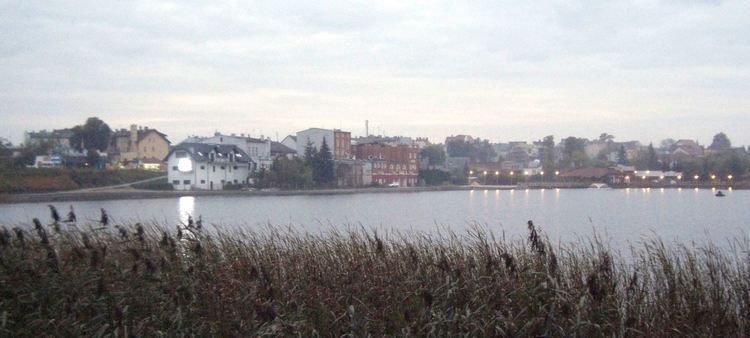Postal code 89-400 Area 5.82 km² Local time Tuesday 4:56 PM | County Sępólno Time zone CET (UTC+1) Car plates CSE Population 9,258 (2006) | |
 | ||
Weather 15°C, Wind NE at 8 km/h, 60% Humidity Voivodeship Kuyavian-Pomeranian Voivodeship | ||
Sępólno Krajeńskie ['sɛmˈpulnɔ kraˈjɛɲskʲɛ] (German: Zempelburg) is a town in Poland, in the Kuyavian-Pomeranian Voivodeship, about 63 kilometres (39 miles) northwest of Bydgoszcz. It is the capital of Sępólno County (powiat sępoleński) and has a population of 9,174 (2004).
Contents
- Map of Sepolno Krajenskie Poland
- History
- Partitions of Poland
- Surrounding villages
- Notable residents
- References
Map of Sepolno Krajenskie, Poland
History
The town received Magdeburg rights in 1360 from king Casimir the Great of Poland. It was located in the valley of the Sępólna River, which flooded the old castle because of its proximity to a nearby lake. The town belonged to the Ostroróg family.
During the Thirteen Years' War between Poland and the Teutonic Knights the area was captured by the Knights and the town itself looted. In the 18th century the town had an number of weavers, shoemakers and farmers. The Jews of the town traded with textiles and other fabricated goods to both West Prussia and East Prussia, for them a new synagogue was built in 1734.
Partitions of Poland
The town was annexed by the Kingdom of Prussia during the First Partition of Poland in 1772. Fires in 1781 and 1782 destroyed 73 houses, so that there existed now 84 devasteted sites in the town. In the year of 1783 the town had altogether 183 houses, most of them having thatched roofs.
Zempelburg became part of the Duchy of Warsaw from 1807–1815 during the Napoleonic Wars, after which it was restored to Prussia. In 1871 the town became part of the Prussian-led German Empire. Zempelburg was a center for the textile and shoemaking industries.
Zempelburg belonged to Landkreis Flatow until 1920, when the eastern part of this Landkreis with the towns of Kamień Krajeński, Więcbork and Sępólno were transferred back to the Second Polish Republic after the Treaty of Versailles. The town became the seat of Sępólno County. Sępólno was annexed by Nazi Germany in 1939 and made the seat of Landkreis Zempelburg. In 1945 the town was restored to Poland.
Landmarks of Sępólno Krajeńskie include a Protestant church in the market built in 1857.
